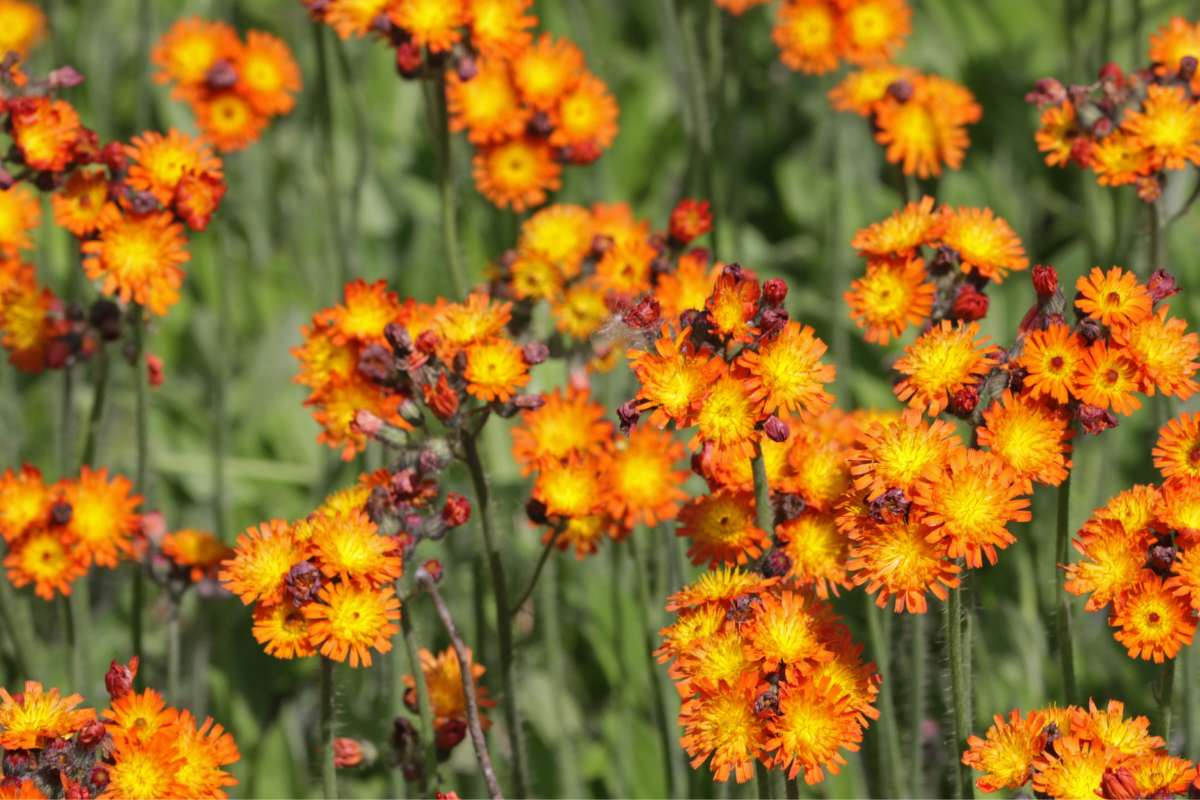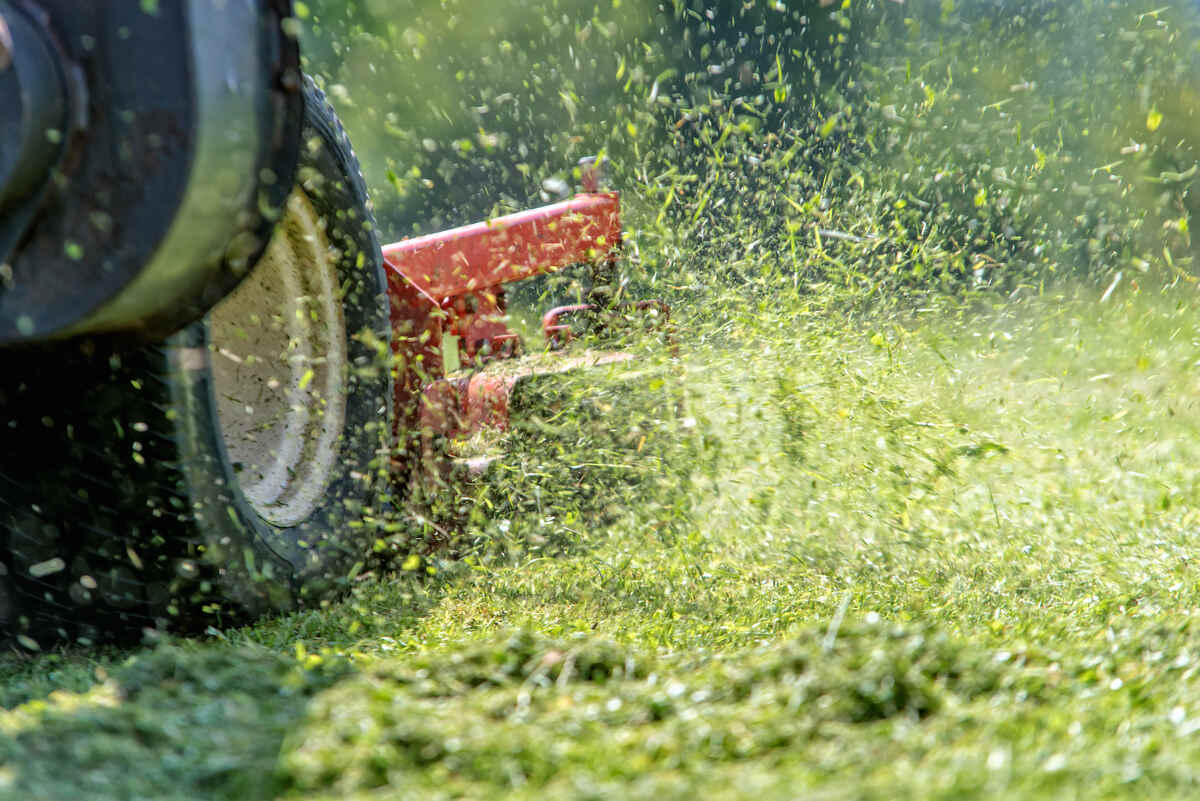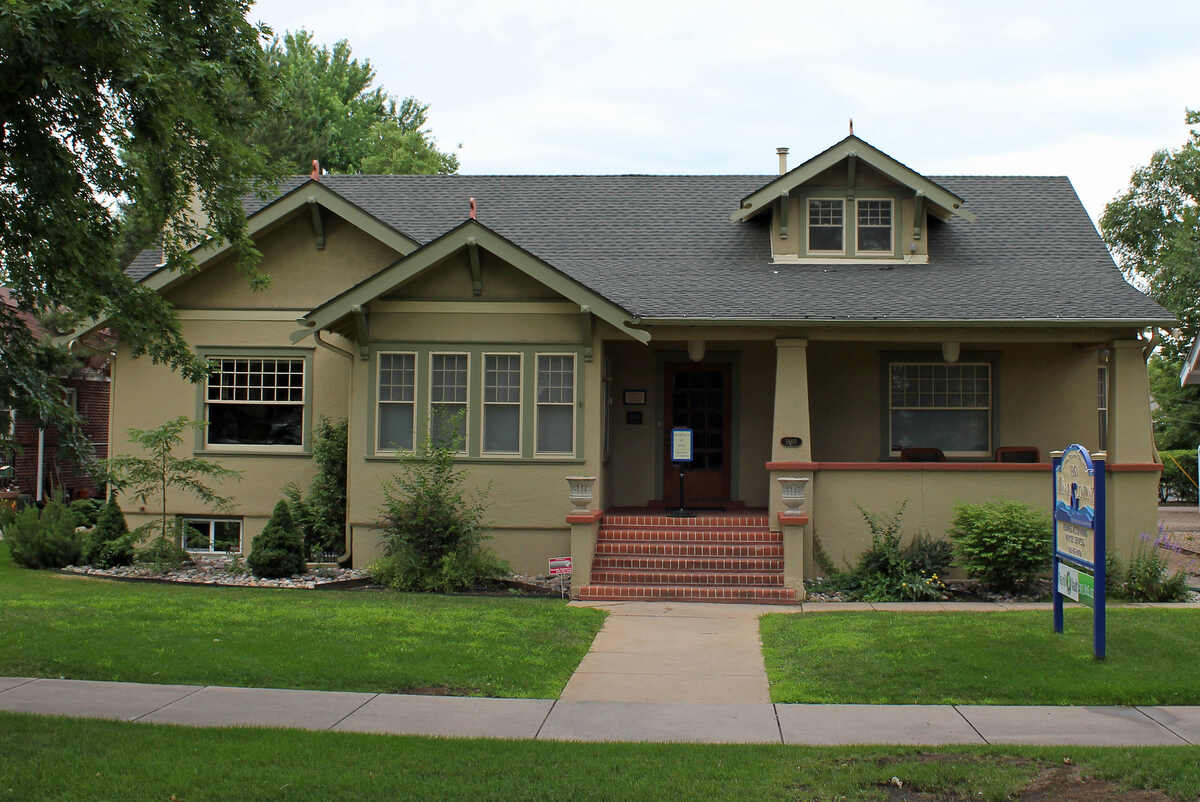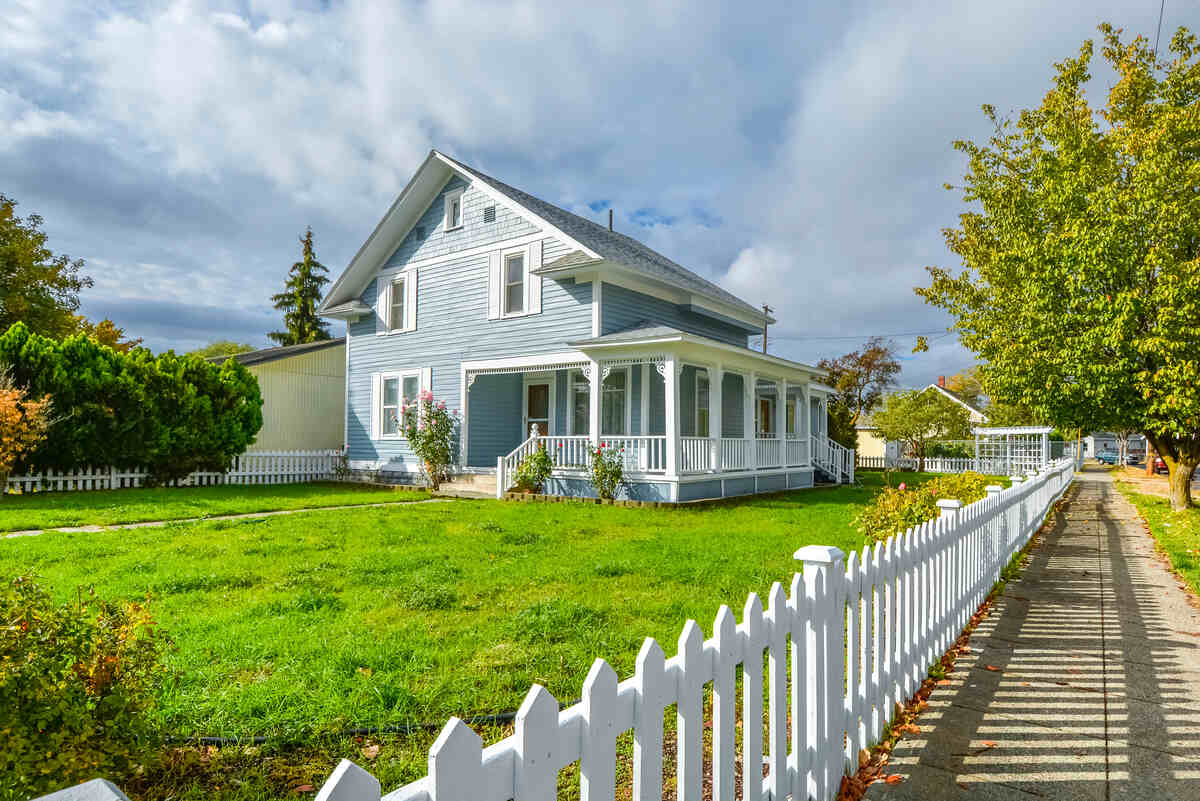
Welcome to the Evergreen State, where the coffee is strong, and the rain is stronger. Yes, you’ve guessed it, we are talking about none other than Washington State. With all this state’s natural beauty comes the need for a lush, green lawn. But with so many options available, how do you know which grass seed is the best for Washington?
As a state that experiences a wide range of temperatures and rainfall, finding the right grass type can be a challenge. That’s why it’s essential to choose one that can withstand the unique climate of your area.
Whether you’re dealing with heavy rainfall in the western part of the state or dry, hot summers in the East, we’ve got you covered. So sit back, grab a cup of coffee, and let’s get started!
And later, we’ll give you a quick look on how to choose the best grass seed for your Washington lawn.
Kentucky Bluegrass

Photo Credit: Matt Lavin / Flickr / CC BY-SA 2.0
Known for its dark blue-green color and fine texture, Kentucky bluegrass is well-suited to eastern Washington’s climate and soil conditions. It can handle the region’s hot summers and cold winters, making it a great choice for those living in the drier, eastern part of the state.
However, there are better options for those living in western Washington than Kentucky bluegrass, as it struggles with frequent rains and dampness. If you still want to incorporate Kentucky bluegrass into your lawn mix, it’s recommended to mix it with at least 50% of other grass types, like perennial ryegrass or fine fescue.
Classification: Cool-season grass
Spreads by: Rhizomes
Shade tolerance: Low
Drought tolerance: Moderate
Foot traffic tolerance: Moderate
Maintenance needs: Moderate mowing frequency and high fertilization needs.
Mowing height: Set mowing height between 2.5 and 3.5 inches.
Potential for disease: Moderate to high; prone to several diseases, such as dollar spot, leaf spot, necrotic ring spot, summer patch, and stripe smut.
Soil pH: 6-7.5
Soil type: Performs best in well-drained, heavy soils with high fertility.
Other notes: Kentucky bluegrass can be a great option for those looking to maintain sports fields or golf courses when mixed with perennial ryegrass. This combination can work well in the state’s eastern and western parts.
Grass Seed Options:
– Jonathan Green (11970) Blue Panther Kentucky Bluegrass Grass Seed (3 lbs.)
– SeedRanch Midnight Kentucky Bluegrass Seed (5 lbs.)
Perennial Ryegrass
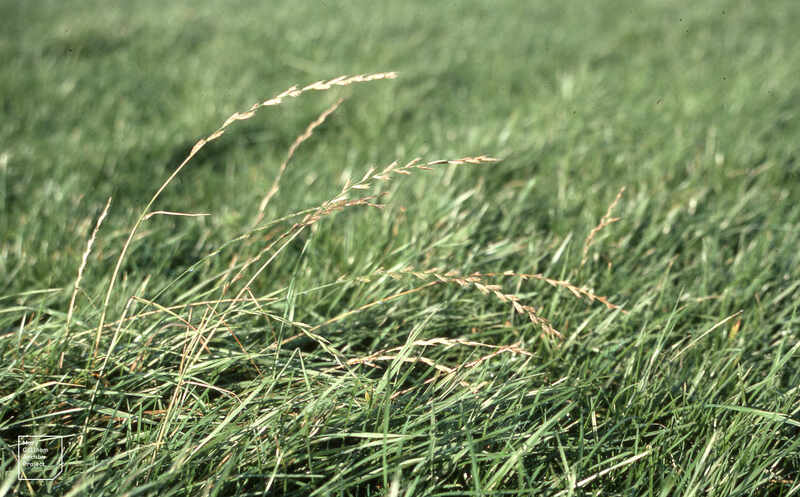
Photo Credit: Dr Mary Gillham Archive Project / Flickr / CC BY 2.0
Turf-type perennial ryegrass is a versatile, dark green grass seed option that thrives in western and eastern Washington State. It can be planted alone in western Washington or in seed blends with fine fescues or Kentucky bluegrass throughout the state, depending on the specific needs of your lawn.
Regardless of how it’s planted, perennial ryegrass is known for its fast germination, providing quick results for those looking to establish a new lawn. In addition, this fast growth serves as a way to outcompete weeds, providing cover while the other grasses in the seed mix become established.
Classification: Cool-season grass
Spreads by: Has a bunch-type growth habit
Shade tolerance: Low
Drought tolerance: Low
Foot traffic tolerance: High
Maintenance needs: Moderate mowing and fertilization requirements. Thatch is not significant.
Mowing height: Set mowing height to 1.5 to 2.5 inches
Potential for disease: High. Common diseases include gray leaf spot, red thread, and leaf spot/melting-out.
Soil pH: Can grow in soils with a pH between 5 and 8, but prefers between 6 and 7.
Soil type: Prefers good drainage and fertility, but can tolerate some poor drainage.
Other notes: It might need overseeding to maintain its thickness as it doesn’t self-repair.
Grass Seed Options:
– Outsidepride Perennial Ryegrass Seed (5 lbs.)
– Eretz ProTurf Perennial Ryegrass Fine Lawn Seed (choose your size)
Fine Fescue
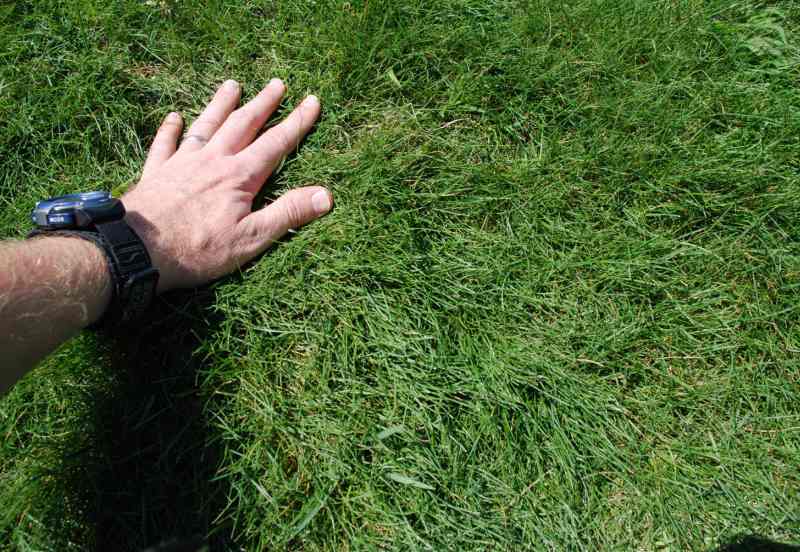
Aaron J. Patton, Ph.D. / Turfgrass Extension Specialist at Purdue University
Fine fescues are a popular grass seed option in Washington State. They are known for their versatility and adaptability to different growing conditions. In addition, they blend well with other types of grasses suited for the state, making them an excellent option for those looking to establish a healthy and diverse lawn.
One of the key benefits of fine fescues is their ability to grow in the shade. If you don’t have full sunlight in your yard, fine fescue grass can thrive where other grasses struggle. This makes them great for those living near the dense forests of western Washington.
Classification: Cool-season grass
Spreads by: Creeping red fescue spreads by rhizomes, while other fine fescues are bunch-type grasses, such as Chewings, hard, and sheep fescues.
Shade tolerance: Moderate to High, depending on species
Drought tolerance: Moderate to High, depending on species
Foot traffic tolerance: Low to Moderate, depending on species
Maintenance needs: Low fertilizer and mowing needs
Mowing height: Set mowing height between 2.5 and 4 inches, depending on species.
Potential for disease: Moderate. Common diseases include red thread, leaf spot, dollar spot, summer patch, and powdery mildew.
Soil pH: 6-6.5
Soil type: Will not perform well in wet soil conditions. Prefers drier soils and tolerates a wide range of soil types and fertility.
Other notes: Common varieties in Washington include hard fescue, Chewings fescue, and creeping red fescue.
Grass Seed Options:
– Outsidepride Legacy Fine Fescue Grass Seed (5 lbs.)
– Eretz Creeping Red Fine Fescue Seed (choose your size)
– Outsidepride Creeping Red Fine Fescue Grass Seed (25 lbs.)
– Outsidepride Hard Fine Fescue Grass Seed (10 lbs.)
Tall Fescue

Aaron J. Patton, Ph.D. / Turfgrass Extension Specialist at Purdue University
If you’re looking for a grass seed option that can tolerate various challenging growing conditions, tall fescue may be the answer. While it doesn’t have the fine texture of other grasses like Kentucky bluegrass, perennial ryegrass, and fine fescues, tall fescue is a hardy option that can withstand drought, moderate traffic, and a variety of difficult soils.
In particular, turf-type tall fescue may be ideal for poorly drained soils, shady areas, and soils with high salt content. It can grow deep roots that access water and nutrients even in dry conditions, making it an excellent choice for those living in areas with low rainfall.
Classification: Cool-season grass
Spreads by: Produces short rhizomes but has a bunch-type growth habit
Shade tolerance: Moderate
Drought tolerance: Moderate to High
Foot traffic tolerance: Moderate
Maintenance needs: Frequent mowing. Does not produce significant thatch.
Mowing height: Set mowing height to 2 inches when grass reaches 3 inches tall.
Potential for disease: Tolerant of most diseases when properly maintained.
Soil pH: 5.5-6.5
Soil type: Adapted to a wide range of soil conditions, but prefers fertile clay soils with good drainage.
Other notes: Tall fescue must be overseeded to keep a dense lawn, especially in western Washington.
Grass Seed Options:
– Triple-Play Tall Fescue Grass Seed Blend (5000 sq ft)
– Eretz Kentucky 31 K31 Tall Fescue Grass Seed (choose your size)
– Pennington The Rebels Tall Fescue Grass Seed Mix (7 lb.)
Colonial Bentgrass
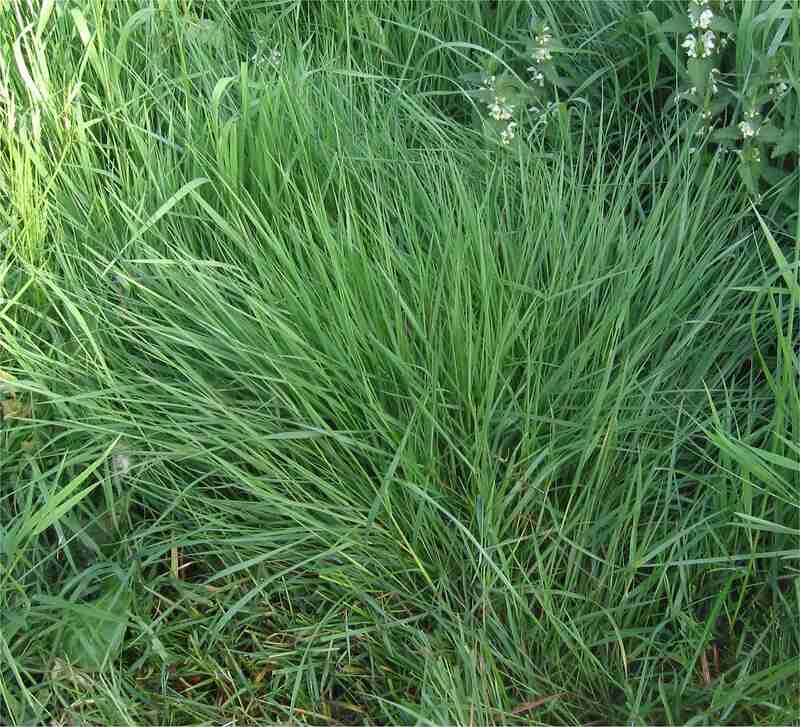
Photo Credit: Rasbak / Wikimedia Commons / CC BY-SA 3.0
Colonial bentgrass is a grass seed option that can be seeded alone or added to a mixture with creeping red fescue, or Chewings fescue in western Washington. However, remember that its mowing height should be below 0.75 inches if planted as a single grass, or it will quickly build up thatch.
While colonial bentgrass can be great for western Washington, it’s not recommended for eastern Washington. The region’s climate and soil conditions are not well-suited for this grass type, which may struggle to establish and thrive.
Classification: Cool-season grass
Spreads by: Short rhizomes that may bring about short stolons
Shade tolerance: Moderate
Drought tolerance: Low
Traffic tolerance: Low
Maintenance needs: Moderate to high. Best when mowed short, at least once weekly.
Recommended mowing height: Set the mowing height between 0.5 and 1 inch. May mow up to 1 inch if seeded with other grasses.
Potential for Disease: Moderate. Susceptible to Fusarium patch in the winter. Vulnerable to Take-all patch when young but severity decreases as turf develops.
Soil pH: 5.5-6.5
Soil type: Tolerates poor soil conditions, but prefers moist and fertile soil.
Other Notes: Colonial bentgrass should be seeded at 2 pounds per 1,000 square feet when used as a monostand, and at 0.5 pounds with 2.5 pounds of creeping red or Chewings fescue per 1,000 square feet when in a mix.
What is the Best Grass Seed for Western Washington?
If you’re looking for the best grass seed for western Washington, there are a few things to keep in mind. Located west of the Cascade Mountains, this region is known for its wetter climate and oceanic conditions.
This means you don’t have to worry about finding grass that can withstand drought since this area gets plenty of rainfall. Still, you do need to consider factors like shade tolerance and disease resistance.
So here are the best grass types for Western Washington:
- Perennial ryegrass as monostands or in mixtures with fine fescues or colonial bentgrass.
- Fine fescues, preferably creeping red fescue or Chewings fescue.
- Tall fescue, seeded alone.
- Colonial bentgrass seeded alone or with fine fescues.
What is the Best Grass Seed for Seattle?
Seattle, the biggest city in Washington State, has its own unique personality and flair. But when it comes to lawn care, the best grass seeds for Seattle are pretty similar to those found in the rest of the Western Washington region.
Options like perennial ryegrass, fine fescues, tall fescue, and colonial bentgrass can all help you achieve a lush, vibrant lawn that fits right in with the city’s cool and rainy climate.
But what about Kentucky bluegrass? Well, it’s not the most adapted choice for Seattle’s damp and rainy climate. If you really want to incorporate Kentucky bluegrass into your lawn mix, keep it to less than 50% of the total seed mixture and blend it with other grass types better suited to the region’s unique growing conditions.
When is the Best Time to Plant Grass Seed in Western Washington?
If you plan to plant grass seed in western Washington, timing is everything. The best time to plant cool-season grasses in the Pacific Northwest is when soil temperatures are between 50 and 65 degrees. In Seattle, this typically occurs between April 13th and May 10th, but you can use a soil (or meat) thermometer to be sure.
Planting grass seed during this time allows the seed to take advantage of the warm spring weather before the heat of summer sets in.
What is the Best Grass Seed for Eastern Washington?
Unlike the state’s wetter and cooler western region, eastern Washington has a semi-arid climate and receives very little rainfall. The summers are hotter, the winters colder, and there’s considerable snowfall, making choosing a grass type that can withstand these challenging conditions essential.
Here are the best grass types for eastern Washington:
- Kentucky bluegrass as a monostand or seeded with fine fescues.
- Fine fescues, particularly creeping red fescue, Chewings fescue, and hard fescue.
- Tall fescues seeded alone.
When is the Best Time to Plant Grass Seed in Eastern Washington?
The best time to plant cool-season grasses in eastern Washington is also when soil temperatures are between 50 and 65 degrees. For Spokane, a major city in the region, this typically occurs between April 6th and May 3rd.
Remember that planting grass seeds too late in the season can lead to poor establishment and weak root systems. If you miss the spring planting window, it’s best to wait until the fall to plant your grass seed, but no later than mid-September.
How to Choose the Best Grass Seed for Washington State
Low vs. High Maintenance
When it comes to lawn care in Washington State, choosing the right grass type is just the first step. It’s also important for homeowners to consider how much time and effort they’re willing to put into maintaining a healthy and vibrant lawn.
High-maintenance grasses: Kentucky bluegrass
Moderate-maintenance grasses: Perennial ryegrass, tall fescue, colonial bentgrass
Low-maintenance grasses: Fine fescues
Drought Tolerance
With eastern Washington’s hot and dry climate, choosing grasses that can withstand the region’s common drought conditions is vital. Grasses that are well-adapted to the semi-arid climate can save you time and conserve water during extended periods of limited rainfall.
High drought tolerance: Fine fescue
Moderate drought tolerance: Kentucky bluegrass, tall fescue
Low drought tolerance: Perennial ryegrass, colonial bentgrass
Shade Tolerance
Keep in mind that different grass types have different light requirements. While some grasses thrive in full sun, others can tolerate partial shade. By selecting a grass type well suited to your yard’s shade level, you’re one step closer to establishing a healthy lawn.
High shade tolerance: Fine fescues
Moderate shade tolerance: Tall fescue, colonial bentgrass
Low shade tolerance: Kentucky bluegrass, perennial ryegrass
Bring in the Pros
Looking to transform your lawn into an evergreen oasis fit for the Evergreen State? Call a Washington lawn care pro near you! We have trusted professionals in Seattle, Spokane, Tacoma, and many more cities across the state.
Main Image Credit: Shutterstock
LawnStarter participates in the Amazon Services LLC Associates Program, an affiliate advertising program. LawnStarter may earn revenue from products promoted in this article.


